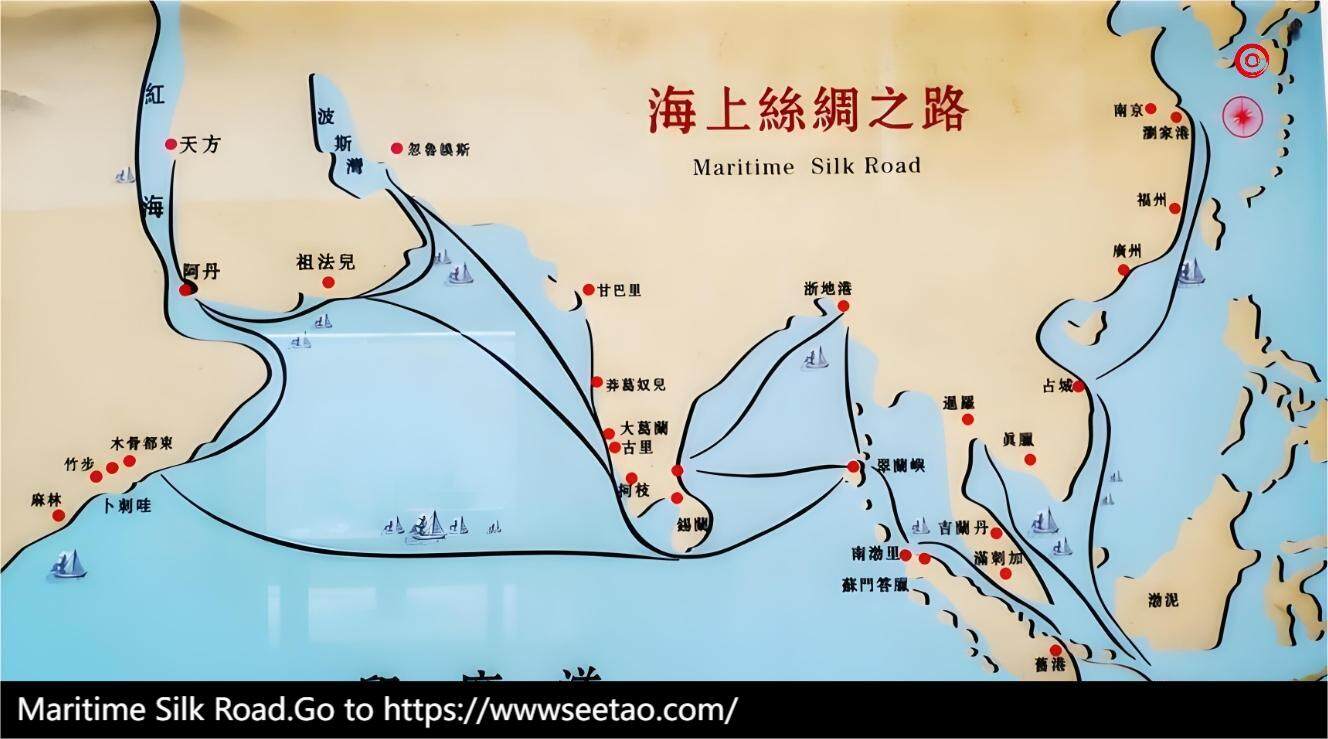- The opening of the Maritime Silk Road broke the geographical barriers and promoted exchanges between different civilizations
The Maritime Silk Road, an ancient route that has sprouted since the Qin and Han Dynasties, is an important channel for China to communicate with the world. More than two thousand years ago, the Nanyue Kingdom (203 BC-111 BC), a vassal state of the Western Han Dynasty, was located on the coast of the South China Sea. Its capital was located in today's Guangzhou. Relying on its unique geographical location and convenient water transportation, Nanyue Kingdom quickly rose to become an important port and commodity distribution center at that time.

In 1983, the tomb of the second generation of Nanyue monarchs discovered in Guangzhou unveiled the mystery of this ancient kingdom for us. The silver box unearthed in the tomb, with its unique West Asian petal pattern and Persian hammering craftsmanship, presents an artistic style that is completely different from traditional Chinese utensils. This discovery, together with other West Asian style artifacts unearthed from the tomb of the Nanyue King, has become strong evidence that the Maritime Silk Road has long been opened.
At the same time, the octagonal stone pillars found in the ruins of the Nanyue Palace also provide another important clue for ancient maritime exchanges. This kind of stone pillar is common in Indian caves, but strangely, it is rarely found on the land Silk Road passing through India. This can't help but remind people that these stone pillars may have been introduced to Nanyue from India through the Maritime Silk Road. In addition, the copper lifting tube with feathered people and sea boat patterns unearthed from the tomb of the Nanyue King and the pottery ship model unearthed in Guangzhou vividly demonstrate the maturity and sophistication of shipbuilding and navigation technology in the Han Dynasty.
Nanyue Kingdom actively expanded overseas trade and made Guangzhou an important node on the Maritime Silk Road. Those Persian silver boxes purchased from overseas and the stone pillar structures originated from India not only witnessed the courage and wisdom of Chinese ancestors to break geographical barriers and open up maritime channels, but also reflected the in-depth exchanges and integration between different civilizations through the Maritime Silk Road.Editor/Cheng Ting
Comment
 Praise
Praise
 Collect
Collect
 Comment
Comment
 Search
Search














Write something~